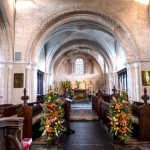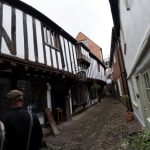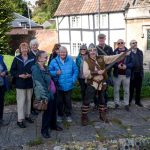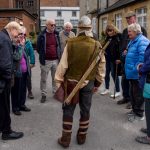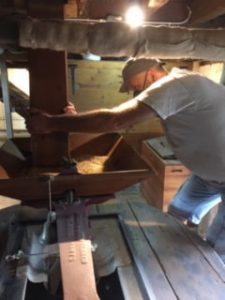
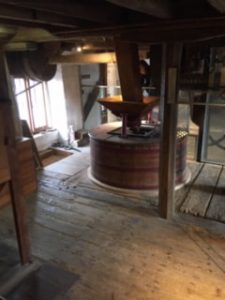

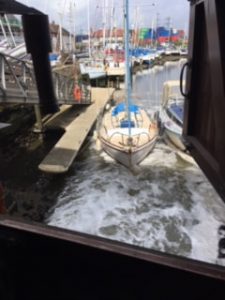
The mini bus arrived in Lyndhurst in plenty of time for a couple of hours at the New Forest Centre which provides visitors with a comprehensive history about the newest of our National Parks. We learned a lot about the wildlife and fauna, ranging from ancient woodlands through downland heath; noting that in some cases these were very rare. The various roles of the Forestry Commission, National Park management, Commoners, Verderers and the Public’s interests were explained and displays showed how they are balanced in the best interests of preserving the forest in perpetuity.
Moving on to Totton in time for lunch at either the Mill café or the adjacent Anchor Inn, we were in good time to meet our most informative guide who showed us around the mill which was working.
The present Mill structure dates back more than 200 years; however a Mill on this site was noted in the Doomsday Book. At Eling the river Test is tidal, and one of the creeks has a dam which features sluice gates which automatically allow incoming water to pass, but shut when the tide turns. At low tide this results in a ‘head’ of water about 50 cm high, which when released provides sufficient energy to power the Mill for about 6 hours. There are, of course 2 tides per day.
Apparently tide mills were once a common feature along the British coast line (there were 7 in Southampton Water alone), but now only two working mills remain; the other being in Sussex which has been recently restored. This makes the Totton mill rather special and very much worth a visit. In all yet another very good day for the Questers who attended.
Thank you to Chris Coffin who did the initial preparation for this trip; and to the ever cheerful Robert Kemp, our driver, without whom the trip would not have been possible.
Norma Bryan

